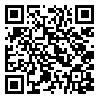پنجشنبه 11 دی 1404
دوره 10، شماره 1 - ( 10-1402 )
جلد 10 شماره 1 صفحات 30-20 |
برگشت به فهرست نسخه ها
Download citation:
BibTeX | RIS | EndNote | Medlars | ProCite | Reference Manager | RefWorks
Send citation to:



BibTeX | RIS | EndNote | Medlars | ProCite | Reference Manager | RefWorks
Send citation to:
Dadjoo M, Rezaei S, Rohampour K, Naseh A, Sadeghi Bajestani G. Artificial Neural Network in Autism Spectrum Disorder Diagnosis Based on Quantitative Electroencephalography. Caspian J Neurol Sci 2024; 10 (1) :20-30
URL: http://cjns.gums.ac.ir/article-1-661-fa.html
URL: http://cjns.gums.ac.ir/article-1-661-fa.html
Artificial Neural Network in Autism Spectrum Disorder Diagnosis Based on Quantitative Electroencephalography. مجله علوم اعصاب کاسپین. 1402; 10 (1) :20-30
چکیده: (1512 مشاهده)
Background: Early diagnosis of autism spectrum disorder (ASD) is essential because the challenges that ASD children and their parents face will be managed better by developmental and behavioral intervention at earlier ages.
Objectives: This study aims to diagnose ASD based on electroencephalography (EEG) with the help of an artificial neural network (ANN).
Materials & Methods: The statistical population includes all girls and boys aged 3 to 7 years referred to child psychiatry and neurodevelopmental centers in Mashhad City, Iran. A total of 34 children with ASD (5 girls and 29 boys) and 11 children without any neurodevelopmental disorders (8 girls and 3 boys) participated in this study. EEG signals were recorded through C3 and C4 channels based on the standard 10-20 system. With the help of programming codes, the absolute power of the frequency bands (delta, theta, alpha, mu rhythm, beta, and gamma) was extracted from the brain signals of the samples.
Results: This study showed a significant difference in mu rhythm between the two groups. The classification result based on discriminant function analysis in two groups gave a sensitivity of 67.6% in the third stage of EEG recording. Seven band frequencies were used as features for ANN inputs. The results indicated that the radial basis function network with 402 neurons in the hidden layer accurately diagnosed and classified the EEG signals of ASD children from non-neurodevelopmental
children (mean square error=1.22325e-5).
Conclusion: It can be concluded that band frequencies are notable features in diagnosing ASD.
Objectives: This study aims to diagnose ASD based on electroencephalography (EEG) with the help of an artificial neural network (ANN).
Materials & Methods: The statistical population includes all girls and boys aged 3 to 7 years referred to child psychiatry and neurodevelopmental centers in Mashhad City, Iran. A total of 34 children with ASD (5 girls and 29 boys) and 11 children without any neurodevelopmental disorders (8 girls and 3 boys) participated in this study. EEG signals were recorded through C3 and C4 channels based on the standard 10-20 system. With the help of programming codes, the absolute power of the frequency bands (delta, theta, alpha, mu rhythm, beta, and gamma) was extracted from the brain signals of the samples.
Results: This study showed a significant difference in mu rhythm between the two groups. The classification result based on discriminant function analysis in two groups gave a sensitivity of 67.6% in the third stage of EEG recording. Seven band frequencies were used as features for ANN inputs. The results indicated that the radial basis function network with 402 neurons in the hidden layer accurately diagnosed and classified the EEG signals of ASD children from non-neurodevelopmental
children (mean square error=1.22325e-5).
Conclusion: It can be concluded that band frequencies are notable features in diagnosing ASD.
| بازنشر اطلاعات | |
 | این مقاله تحت شرایط Creative Commons Attribution-NonCommercial 4.0 International License قابل بازنشر است. |



